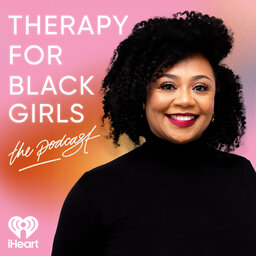Session 270: What You Need to Know About Enneagrams
The Therapy for Black Girls Podcast is a weekly conversation with Dr. Joy Harden Bradford, a licensed Psychologist in Atlanta, Georgia, about all things mental health, personal development, and all the small decisions we can make to become the best possible versions of ourselves.
If you’re someone who enjoys taking personality tests you might have heard of enneagrams. If you’re not familiar, enneagrams are models of the human psyche that are based around nine intertwining personality archetypes. This week I’m joined by Chichi Agorom, a Certified Enneagram Teacher & Practitioner and the Author of The Enneagram for Black Liberation to chat all about it. During our conversation we chatted about the history of the enneagram, differentiating between the nine personality types, and how the enneagram can be used as a tool for black resistance and liberation.
Resources
Visit our Amazon Store for all the books mentioned on the podcast.
Get updates about Sisterhood Heals.
Where to Find Chichi
Stay Connected
Is there a topic you'd like covered on the podcast? Submit it at therapyforblackgirls.com/mailbox.
If you're looking for a therapist in your area, check out the directory at https://www.therapyforblackgirls.com/directory.
Take the info from the podcast to the next level by joining us in the Therapy for Black Girls Sister Circle community.therapyforblackgirls.com
Grab your copy of our guided affirmation and other TBG Merch at therapyforblackgirls.com/shop.
The hashtag for the podcast is #TBGinSession.
Make sure to follow us on social media:
Twitter: @therapy4bgirls
Instagram: @therapyforblackgirls
Facebook: @therapyforblackgirls
Our Production Team
Executive Producers: Dennison Bradford & Maya Cole Howard
Producers: Fredia Lucas, Ellice Ellis & Cindy Okereke
Production Intern: Gabby Gladney
 Therapy for Black Girls
Therapy for Black Girls


